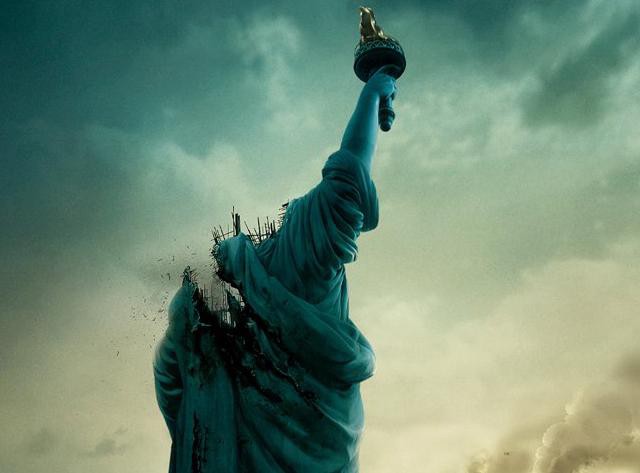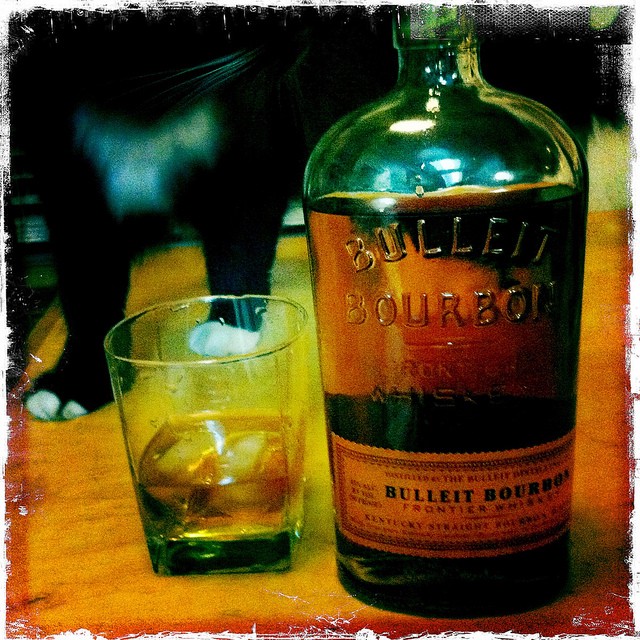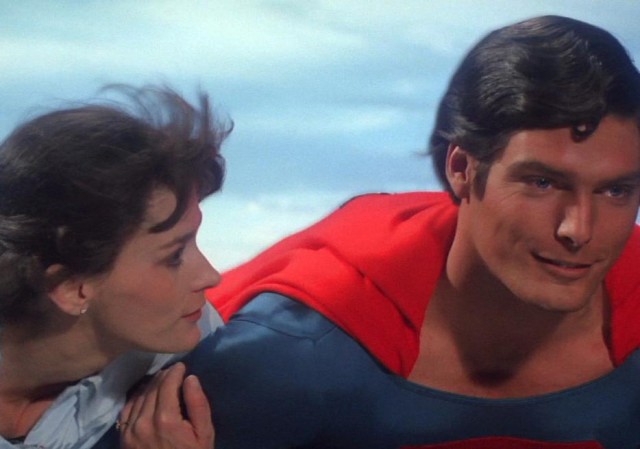David Thomas Is 60
Many happy returns to Mr. David Lynn Thomas of Rocket From The Tombs and Pere Ubu, among others.
Book Enjoyed
“[S]uch pure pop storytelling that reading it is like hearing the best song of summer squirt out of the radio. Both the author and his subjects are so audacious that they frequently made me laugh out loud…. ‘Even the dullest skyjacking made for scintillating copy. And the truly sensational ones were like gifts from the journalism gods.’ Upon Mr. Koerner, those gods have smiled.”
— The New York Times kind of likes Brendan I. Koerner’s The Skies Belong to Us: Love and Terror in the Golden Age of Hijacking. For what it’s worth, I do too.
American Cities I'd Prefer To See Get Blown Up In The Movies Instead of New York
American Cities I’d Prefer To See Get Blown Up In The Movies Instead of New York
by Evelyn Everlady

30. Providence
29. Little Rock
28. Des Moines
27. Houston
26. Olympia
25. Cincinnati
24. Fargo
23. Omaha
22. Albuquerque
21. Louisville
20. Orlando
19. St. Paul
18. Las Vegas
17. Denver
16. Seattle
15. Memphis
14. Columbus
13. Cheyenne
12. Phoenix
11. Salt Lake City
10. Milwaukee
9. Springfield (all)
8. Kansas City, MO
7. Kansas City, KS
6. Pittsburgh
5. Portland (both)
4. Baltimore
3. Hartford
2. Trenton
1. Stamford
Evelyn Everlady is the pen name of a woman in New York City, who is actually so over her terrible ex-boyfriend that she doesn’t even care enough to write about him any more, unfortunately for all of us.
Violists: The Imbecile Scumbags Of The Orchestra
“[T]he string-playing world has castes. In symphonic music, violins furnish the melody; cellos, the heartbeat; and basses, the harmonic bedrock. Violas have no such significant function. Their primary role is ‘supportive,’ which means they fill in or double the harmony. Their seating arrangement confirms this accessory role: they’re squeezed between cellos on one side and woodwinds on the other, and play with their instruments facing away from the audience, rendering them almost inaudible — except during waltzes, when they play the pah-pah that follows the oom. It’s hard for this group to maintain self-respect. We know our orchestral colleagues perceive us as failed violinists and musical surplus. Our instrument has few defenders, and even composers malign it.”
— Q: Why do other musicians make fun of violists?
A: Because they suck.
Happy Bourbon Day!

Hello there! As is the case every time this day comes around on the calendar, June 14th is the day we celebrate the birth of bourbon, that sweet Kentucky nectar the legends tell was first produced back in 1789. How should you commemorate this important occasion? I suggest “with bourbon.” Here are two classic recipes I have designed to highlight this most perfect of liquids. You may remember them from earlier celebrations, but if you were actually celebrating properly you probably do not, so what the heck, let’s give them another shot.
This first one I call “The Neat”:
INGREDIENTS
4 oz. bourbon
DIRECTIONS
1. Pour ingredients into glass.
2. Consume.
This is pretty much the perfect cocktail, but I am aware that some people prefer a lighter drink every now and again, particularly in the summer months as the weather grows warm. Hence what I have dubbed “On the Rocks”:
INGREDIENTS
4 oz. bourbon
Ice
DIRECTIONS
1. Place ice in glass. [NOTE: Some people will say you should use one extremely large cube of ice, to impede dilution. These people are not necessarily wrong, but they are the kind of people who think WAY TOO MUCH about cocktail accoutrements. They are, in fact, the kind of people you desperately find yourself searching for excuses to avoid at cocktail parties. If you have a large cube of ice at hand, terrific. Good for you! If not, go with what you’ve got. The point is enjoyment, not precision. This is true of most things in life, by the way; it doesn’t just apply to drinking. But I digress.]
2. Pour bourbon over ice.
3. Consume.
And there you have it. These are the two perfect ways to enjoy bourbon. Happy Bourbon Day, everyone. Celebrate responsibly, or at least have a responsible friend supervise your celebration.
Photo by Seth Anderson, via Flickr
Dancers Anamniotic
“An article on May 29 about the changing nature of the ceremonial first pitch at baseball games misidentified the type of animal represented by the dancers in skintight, metallic green body suits at a recent game at Citi Field. They were amphibians, not reptiles.”
Superman Isn't What He Used To Be

Man of Steel hits theaters tonight, and Warner Brothers is hoping that it will bring out the inner 40-year-old in all of us, and that the inner 40-year-old will dig deep and fork over the twelve to twenty dollars it will cost to see the film. It’s a tough spot: historically, the Superman franchise is one for five when it comes to good movies, which puts Superman pretty far behind John McClane. The movies make money, sure, but the movies themselves (other than II, of course)? Not so super.
Any fanboy will tell you that the solution to the relative quality of this upcoming reboot of the franchise will revolve around one thing: the punching of things. Sure, there’s all sorts of fun new ways to achieve artistic success — there’s even a Hollywood statistical firm that has figured out that targeting demons have higher box office appeal than summoned demons (whatever that means) — but listen to the fanboys, who have sat through such mundanities as Superman saving a choo-choo train, and Superman swooping around the world real fast to turn back time, and Superman lifting a big Kryptonite island and throwing it into space, and Superman throwing the “S”, and whatever Superman did in III and IV (anyone?). Those are all heroic feats (except for the “S” throwing), but they do not require the punching of things. Fanboys would like to see some punching of things. It worked for The Avengers.
Problem solved, right?
But maybe the punching of things is the solution to the wrong problem. Maybe the punching of things exacerbates the real problem: Superman isn’t what he used to be, and the thing he used to be, that’s a thing we could use more of.

It’s not an accident that the American version of iconic fictional heroes are called superheroes. Superman is not just a superhero, or — depends on who you ask — the first superhero. He’s Superman. He’s the most iconic superhero ever.
Superman’s rise as crossover media juggernaut was fast — first comic appearance, 1938; first radio appearance, 1940; first movie (serial) appearance, 1948; first television appearance, 1952. Mere years after his creation by Jerry Siegel and Joe Shuster, Superman was ubiquitous, so much bigger than bigger-than-life.
Part of the reason for this is that he was endowed with superpowers that were just one notch below omnipotence. He was super strong and his skin was impenetrable. “Faster than a speeding train, able to leap tall buildings in a single bound…” Well, in the beginning that was the case, but as the years went by, he could shoot heat rays out his eyeballs, he could see through walls and his breath could freeze things. Basically, he could outrun a speeding train, pick it up, throw it over a tall building, catch it, then also pick up the tall building, pat his head and rub his stomach at the same time, etc.
For this reason, as a character for whom compelling storylines must be created, Superman’s always been a bit of a boondoggle, on account of being Superman. As in, if he’s by definition invulnerable, then what’s the dramatic conflict? (How he shaves? Gag.) To solve this, the comic book introduced kryptonite in 1949, as to Achilles him up, and soon a small moon’s worth of kryptonite meteorites fell upon the planet and Superman was feeling faint with some frequency, but it did little to detract from his resistance enough to create anything resembling suspense.
This only made Superman more popular. The Big One was fought and won by the U.S. (at least in the U.S. history books), and was the last nation standing, the only major participant with no homeland damage. Western Europe? In rubble. The Soviets? Even more rubble, and only yet flexing their peculiar Stalinist version of colonialism. Add to that the vanquishing of the Great Depression, and add to that the Bomb, and there was a strong streak of invulnerability in the national Zeitgeist. And what better comic book character to become the most American of Americans, the paragon of virtues, the most heroic of heroes? The talking mouse? The guy dressed in black and grey with bat ears? No, that would be Superman, the hero equally prone to stopping alien invasions and super-walking little old ladies across the street.
Oddly, when Superman was introduced, he was more of a grim, avenging figure, not so quick to smile, and the mad scientists of the day that would threaten Superman and/or Metropolis were as likely to end up dead in an explosion of the secret death ray lab (“AAAIIIEEEEE!”) than behind bars.
But that quickly changed, and the Superman that persisted into the 70s was the guy posing in front of the American flag with an eagle on his arm, the Big Blue Boy Scout. And when I say blue, I mean blue — check out this DC Comics coloring guide from the 1980s. He was very much a primary colors character. He saved the world. He had a best pal, Jimmy Olsen. He had a secret identity, a nebbish reporter. He had girls go crazy for him, and he declined to get involved. He was a ten year-old’s idea of heroism: selfless, generous, uninterested in profit.
Overall, he was as implausible as “President Newt Gingrich,” but the little kids took him into their hearts as the hero. You might’ve preferred the Marvel Comics, or you might prefer the movie stars or the baseball heroes, but Superman was different. He was not subject to your adolescent fickleness. The future was bright. America was on the ups. Mom and Dad loved you. Bacon for breakfast every morning.
And it may be silly, juvenile even, to look up to a funny book character as a hero in a flesh and blood world, but scan a list of the Most Admired Men, as polled annually by The Gallup Organization, going back to 1946. You will notice that only three men were Most Admired who were not present/future/past presidents. One of those men is Pope John Paul II, and another is Gen. Douglas MacArthur. The third is Henry Freaking Kissinger, from 1973 to 1975. Not coincidentally, the only president since then not to be Most Admired was Gerald Ford. This is what we’ve had for heroes in the real world: presidents, a pope, a general with a God complex and a secretary of state with an odd knack for self-promotion. (Most Admired Women are also listed, but a little odd to use as an example, given the ever-evolving struggle with gender issues. Mother Teresa did well, as so did Margaret Thatcher, but Hillary Clinton has owned it for every year but one since 1997.)
It was hard to beat, having your own personal Superman.
But since that era, the character has changed. The newer narratives, highlighting his outsider status as an actual space alien trying just to fit in with those crazy humans, or even the very emo With Great Power Comes Great Responsibility conflict, have all walked-back the Mom-And-Apple-Pie-ness of the Superman of years ago, to the extent that it existed anywhere outside of the minds of the little kids desperate for something to believe in, a secular God that ameliorated the peculiar uncomfortability of growing up in what school told you was the only great nation of the world, ever. He died and came back, he grew his hair long, he got married, he turned into a guy with weird electrical powers. He’s flailed around in a comic book world that got darker and darker and more grown up.
And the movies and the TV shows never stopped. If anything, they proliferated. But each new sequel, new series, new reboot, Superman splintered, spinning off little baby Superman universes, connected to the others in name only. The awe and the wonder that powered the Superman mythos slowly bled away, and he became just another guy with his underwear on the outside, just like all the others.

When talking about Superman, the dirty reality of his creation must be addressed. Superman is nothing but a small but terrifyingly lucrative bit of Intellectual Property. Oh yeah, he’s infused the dreamlife of Americans for generations, but dreamlife-infusion is a discrete thing that generally is the by-product of something else — making movies or TV shows or comic books, all of which are done expressly for the purpose of getting paid.
It’s legendary in the comic business how Siegel and Shuster got screwed over by DC Comics, creating Superman as a work-for-hire, then going on to live and eventually die in obscurity, but the nature of their screwing has nothing to do with art and everything to do with commerce. It was not the creative rights, the dreamlife-infusion rights that were trammeled, but rather the economic rights. No fanboy sticks up for Siegel and Shuster because they never got to control the direction of Superman comic books. The indignity suffered and duly fanboy-noted is that a bunch of people made piles of cash as big as the piles of petroleum coke alongside the Detroit River, and none of those people were Siegel and/or Shuster.
The IP of Superman yearns to be exploited. Hence, Man Of Steel. I’ve avoided advance reviews, which I am told have generally not been very kind, but the previews and trailers I’ve seen indicate that there is a very good chance that many things will be punched in the movie, and that Superman will be doing some of the punching. This is a a good thing. I don’t understand the reticence of the authors of previous movies to have the punching of things, but it was missed.
But the punching of things, as important as it may be to the success of the Superman franchise and the bottom line of Warner Brothers, has nothing to do with Superman, the ideal, the notion. That notion does not exist anywhere but in the ugly chunks of nostalgia lodged in the hearts of the Boomers and the Gen-Xers all Peter Panned nearly to the point of obsolescence. That notion is equal parts George Reeves, who got shot in the head, and Christopher Reeve, who was thrown off that horse, none of them invulnerable like they were supposed to be.
There can’t be a return to innocence. We weren’t actually ever that innocent, just excessively naive. A vain argument for the return to innocence would be, for example, the insertion of the punching of things into “Super Friends.” But it would be a nice little ray of sunshine to have a Hero, one that wasn’t retconned into meaninglessness, drained of his heroism, all in the hopes of keeping his IP robust.
New York City, June 12, 2013

★★★★★ The river was brown and stirred up; the clouds were white and whiter over deep blue. A man brushed his teeth on an east-facing balcony; a woman several balconies below him lay back in a lawn chair and held a newspaper above herself. The streets were tranquil. One of the glowing clouds briefly intercepted the sun over Alice Tully Hall, then retreated. The fountain in Lincoln Center looked like a cut-glass abstraction. A flat pink cap finished a pedestrian’s outfit of pink seersucker shirt and pink seersucker shorts. Down on the subway platform, some wayward flying insect landed on the wrist of the hand holding the new book of poems. The wind flipped shirttails. A beer truck, pulling over in the bike lane, scraped loudly against the flourishing spread of a small tree. Beats spilled out the open windows of a blue car, with neon rims and passengers riding front and back. The descended sun, as an afterthought, drew a hot pink line in the western sky.
British Freak Dancers Fall Silent
“The Joint Morris Organisations, the umbrella group for the hobby, has said it is struggling to cope with a nationwide shortage of ‘irons’ to fit onto the clogs worn by dancers. The dearth has been blamed on a lack of blacksmiths now producing the items, which are fitted to the soles of the wooden footwear, rather like horse shoes, in order to maximise the noise made by the dance routines. Morris dancers say that unless supplies can be restored, some sides — as groups are known — will stop performing, while others will have to switch to more readily-available rubber fittings, which make far less noise.”
